In the night hunting scene, hunters face many difficult problems. The primary problem is the serious lack of light. Under the cover of night, the natural light is weak, the visual ability of the human eye is greatly limited, and it is difficult to clearly identify the traces of prey. Traditional hunting tools such as optical telescopes are greatly reduced in such low-light environments, and the observation distance is sharply shortened, which cannot meet the hunter's needs for prey search and positioning. Moreover, prey are usually good at using the night and environment to hide themselves. They either hide in dense grass or woods, or use the ups and downs of the terrain and shadows to camouflage, making it difficult for hunters to find them with the naked eye or ordinary tools. In addition, the night hunting environment is complex and changeable. There may be rugged terrain, obstacles and unpredictable weather conditions, such as fog and light rain. These factors further increase the difficulty and danger of hunting, and also put forward higher requirements for hunting tools.
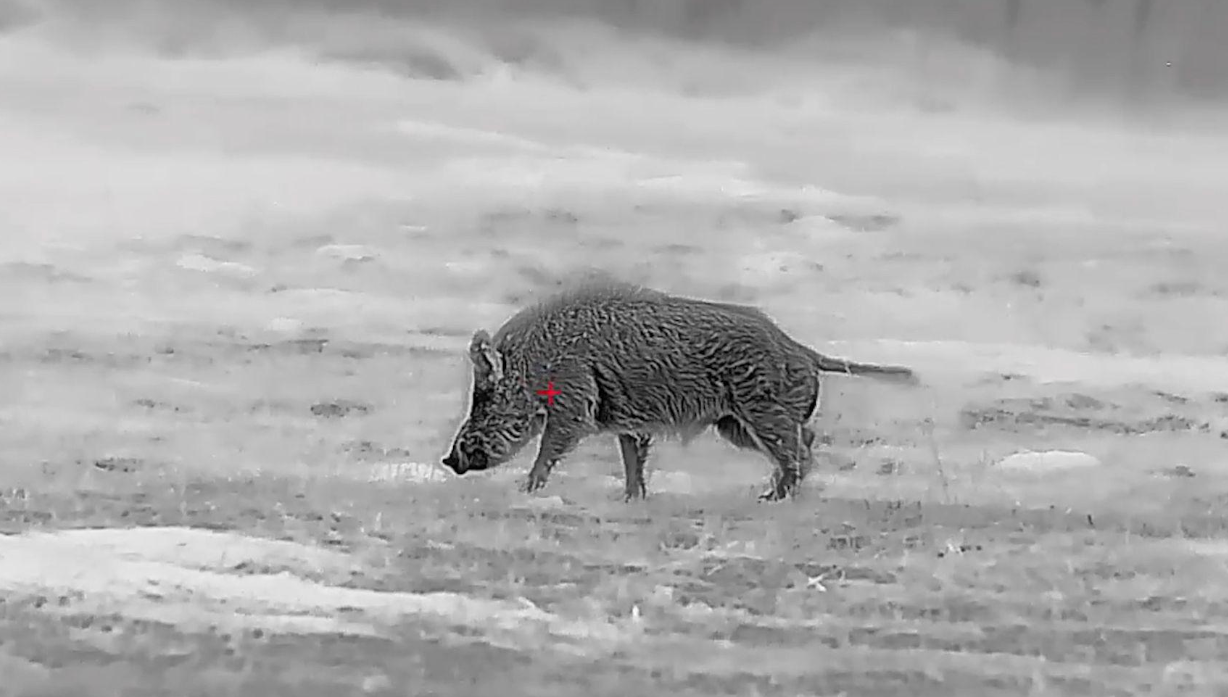
(I) Thermal sensor resolution
Thermal sensor resolution is one of the key indicators to measure the performance of thermal imagers. It directly determines the clarity and detail presentation ability of the image. Thermal imagers convert the infrared radiation of objects into electrical signals through thermal sensors, thereby forming thermal images. Resolution is usually expressed in terms of the number of pixels in the horizontal and vertical directions, such as the common 320×240, 640×480, etc. A higher-resolution thermal imager can more clearly distinguish the outline of the prey, its physical features, and the subtle temperature difference with the surrounding environment, which is essential for accurately identifying the prey species and judging its behavior. In actual hunting, when hunters face prey hidden in the grass or woods, high-resolution thermal imagers can clearly show the prey's ears, eyes, limbs and other details, allowing hunters to quickly and accurately determine whether it is worth hunting, and more accurately locate key parts when aiming and shooting, thereby improving the success rate and efficiency of hunting. On the contrary, a low-resolution thermal imager may blur the image of the prey, making it difficult to distinguish its specific form and position, which may easily cause hunters to miss hunting opportunities, and may even cause danger due to misjudgment. For example, when tracking a hare, a low-resolution thermal imager may only show a rough hot spot and cannot determine the direction of the hare's head and body, while a high-resolution device can clearly present the complete form of the hare, allowing hunters to better plan hunting strategies.
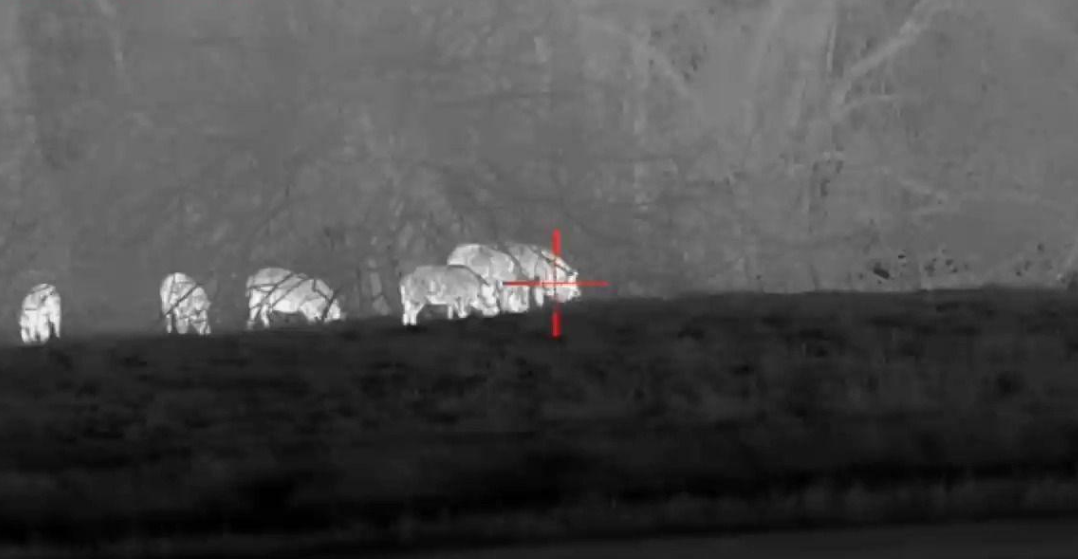
(II) Refresh rate
The refresh rate refers to the number of times a thermal imager can update an image per second, measured in Hertz (Hz). In night hunting, the movements of prey are often quick and agile, so the refresh rate of a thermal imager plays a key role in target tracking. A thermal imager with a high refresh rate can display the movement trajectory of the prey in real time and smoothly, ensuring that the hunter can still clearly see the change in its position when the prey runs, jumps or changes direction quickly, so as to adjust the aiming and shooting angle in time. For example, when hunters hunt flexible prey such as hares or foxes at night, these animals may suddenly accelerate, turn or pause. If the refresh rate of the thermal imager is low, the image will freeze and lag, and the hunter may miss the opportunity to shoot because he cannot accurately grasp the real-time position of the prey. Thermal imagers with higher refresh rates, such as 60Hz or even 120Hz devices, can quickly update images, making the movement trajectory of the prey in the eyes of hunters smoother and more coherent, just like watching high-definition videos, and can more accurately predict the next move of the prey, thereby improving the hit rate and success rate of hunting.
(III) Optical magnification
The optical magnification determines the thermal imager's ability to observe distant prey and the size of its field of view. The higher the magnification, the farther the hunter can observe the prey, which is particularly important for long-range hunting. For example, when hunting in open grasslands or mountains, the prey may appear at a distance. At this time, a higher optical magnification allows the hunter to observe the details and behavior of the prey more clearly and prepare for hunting in advance. However, an increase in magnification will also lead to a corresponding narrowing of the field of view. This means that when the hunter observes a distant target, the surrounding environment information that can be seen will be reduced. In some complex hunting environments, such as woods and bushes, a narrow field of view may cause the hunter to ignore potential dangers around, or it may be difficult to quickly detect other approaching prey. Therefore, hunters need to choose the appropriate optical magnification according to the actual hunting scene. If the hunting area is relatively open and the prey usually appears at a long distance, it may be more appropriate to choose a thermal imager with a higher magnification; if the hunting environment is complex, the prey may suddenly appear at a close distance, or it is necessary to pay attention to the situation in a larger range at the same time, then a moderate magnification will provide a wider field of view, ensuring that the hunter can fully understand the surrounding environment and avoid falling into danger or missing other prey due to limited vision.
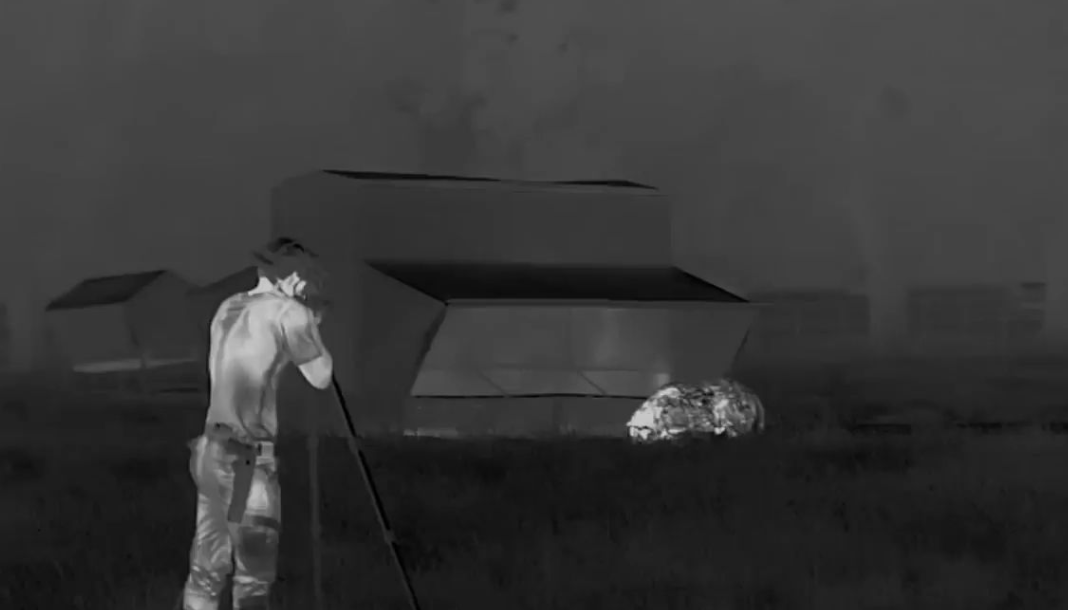
(IV) Detection distance
The detection distance of a thermal imager is affected by a combination of factors. The performance of the device itself is one of the key factors, including the sensitivity of the thermal sensor, the quality of the lens, and the focal length. The higher the sensitivity of the thermal sensor, the farther the weak heat signal can be detected, thereby increasing the detection distance; high-quality lenses and appropriate focal lengths can better focus infrared radiation and improve the detection ability of distant targets. Environmental factors also have a significant impact on the detection distance. For example, the greater the difference between the ambient temperature and the body temperature of the prey, the more obvious the thermal characteristics of the prey in the thermal imager, the easier it is to detect, and the detection distance will increase accordingly; in a high temperature environment, such as a hot summer night, the ambient temperature is high, the temperature difference between the prey and the environment is reduced, and the detection distance of the thermal imager may be limited to a certain extent. In addition, atmospheric conditions such as humidity, fog, and dust will also affect the propagation of infrared radiation, reducing the detection effect and distance of the thermal imager. When choosing a hunting location and time, hunters need to fully consider these environmental factors and choose an environment with suitable temperature and good atmospheric conditions to give full play to the detection performance of the thermal imager, increase the probability of finding prey within the effective detection distance, and thus improve the success rate and safety of hunting. At the same time, understanding the detection distance parameters of the thermal imager can also help hunters reasonably plan the hunting range and route of action, avoid blindly searching in areas beyond the detection capability of the equipment, wasting time and energy, and even failing to be discovered due to approaching the prey, resulting in hunting failure or putting themselves in a dangerous situation.
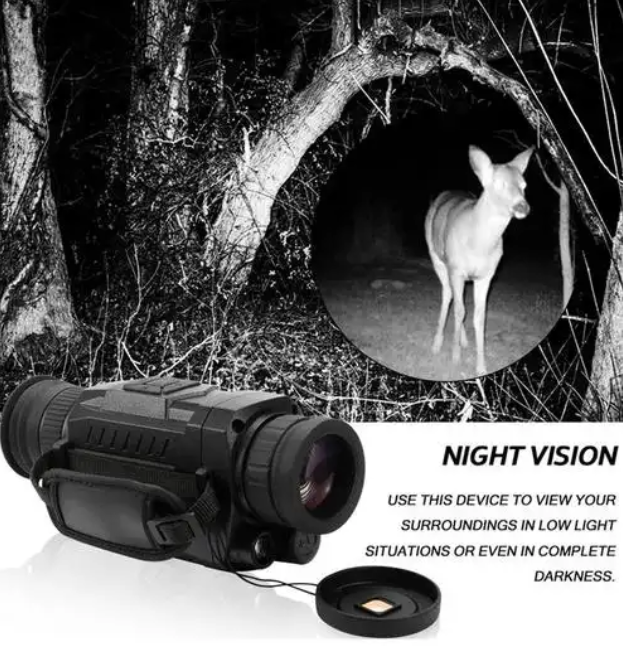
Actual use scenarios and skills
When hunting in the mountains and forests, the use skills of thermal imagers are particularly critical. Due to the dense vegetation in the mountains and forests, prey often hide in them, and it is difficult to find their traces by ordinary observation methods. When using a thermal imager, hunters should choose a suitable observation position and try to stand at a high place to obtain a wider field of view and reduce the obstruction and interference of vegetation on thermal signals. At the same time, pay attention to adjusting the focal length and magnification of the thermal imager, and flexibly set it according to the distance at which the prey may appear and the complexity of the surrounding environment. For example, when searching for prey at a distance, increase the magnification appropriately to identify the target more clearly; when the prey approaches, it is necessary to quickly adjust it back to a lower magnification to ensure that the overall movement of the prey and the surrounding environment can be observed at the same time to prevent the prey from suddenly attacking or escaping and being unable to respond in time. In addition, hunters should also learn to use the ability of thermal imagers to penetrate vegetation and carefully observe abnormal heat signals in thermal images, which may be emitted by the body of the prey hidden behind the leaves.
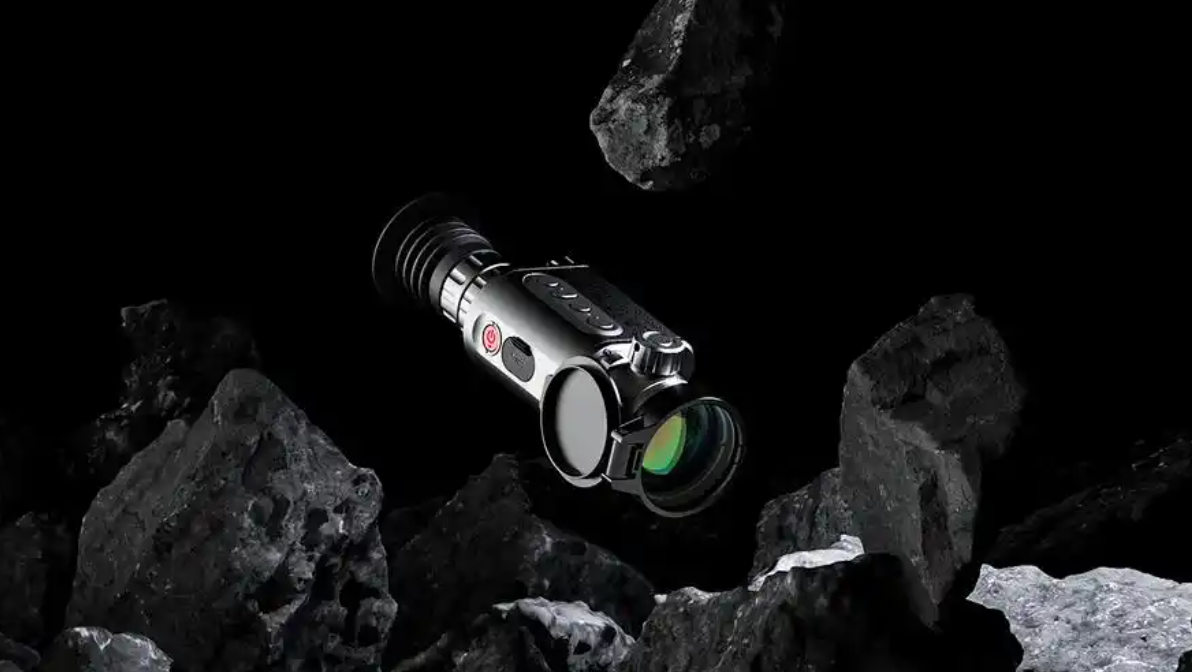
When hunting by the water, the reflection and temperature changes of the water surface will have a certain impact on the observation of the thermal imager. In order to avoid interference from water surface reflection, hunters can try to change the observation angle, try to make the thermal imager form a certain angle with the water surface, and reduce the reflected light entering the lens. At the same time, pay attention to adjusting the contrast and brightness parameters of the thermal imager to enhance the recognition ability of the prey's thermal signal. Due to the large specific heat capacity of water, the water temperature is relatively stable at night, while the body temperature of the prey is relatively high, so in the thermal image, the prey and the water surface will show a significant temperature difference. Hunters need to observe this difference carefully and look for those hot targets that stand out against the background of the water surface, such as animals drinking water by the river or foraging in shallow water. In addition, when hunting by the water, you should also pay attention to the humidity and fog conditions of the surrounding environment. These factors may reduce the detection effect of the thermal imager. If necessary, you can choose to hunt during the period when the fog is light or the wind direction is conducive to blowing away the fog, so as to improve the working efficiency and observation clarity of the thermal imager.
Purchase precautions
First, make sure that the purchased thermal imaging equipment is used for legal hunting activities. Different regions have different laws and regulations on hunting, including strict regulations on the time, place, type of prey, and tools used for hunting. Some areas may have restrictions on the use of thermal imaging equipment, or even list it as an illegal hunting tool. Therefore, before purchasing, be sure to understand local hunting regulations in detail to ensure that your behavior is legal and compliant, and avoid facing severe penalties for violating the law.
Secondly, it is crucial to pay attention to the after-sales service of the equipment. Thermal imagers are relatively sophisticated instruments, and various problems may occur during use, such as failure, damage, and performance degradation. Choose brands and merchants with good after-sales service, so that you can get professional repairs and technical support in time when there is a problem with the equipment. Check whether the merchant provides a certain period of warranty service, understand the scope and conditions of the warranty; whether there is a professional after-sales team that can respond and solve customer problems quickly; and whether it can provide software upgrade services for the equipment to adapt to the evolving technical needs and improve the user experience.
Finally, pay attention to distinguishing the authenticity of the equipment. There are some counterfeit and shoddy thermal imaging products on the market. Not only are the performance of these products not guaranteed, but they may fail at critical moments, affecting the hunting effect, and may even pose safety hazards. When purchasing, choose formal channels, such as officially authorized dealers, well-known e-commerce platforms, or professional outdoor goods stores. Carefully check the product packaging. Genuine products usually have serial numbers and anti-counterfeiting labels. The packaging printing quality is high, with clear text and exquisite patterns. Observe the appearance of the product. Genuine products are finely made, with smooth surface treatment, buttons, interfaces and other parts without defects, and good material texture. Check whether the performance parameters of the product are consistent with the official publicity. You can verify it through actual testing or checking professional evaluation reports. For products with prices significantly lower than the market average, you should be extra vigilant. They are likely to be counterfeit and shoddy goods. At the same time, keep the purchase receipt so that you can protect your legal rights and interests in case of problems, and ensure that you purchase reliable quality and stable performance thermal imaging equipment to provide strong support and guarantee for night hunting activities.

